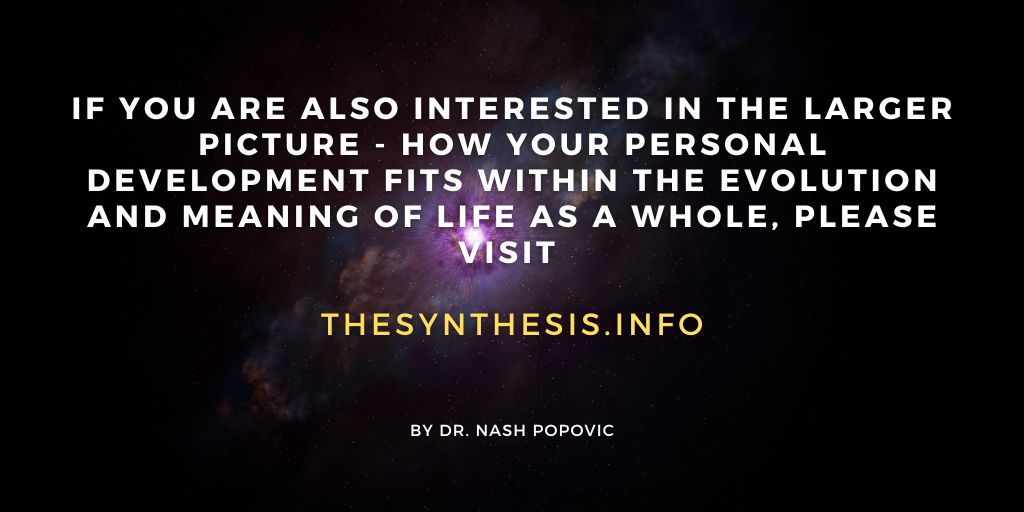23. Attachment
As you learn to become more and more unattached, you discover that you are then able to love those who are dear to you in a deeper, more constructive way.
Roberto Assagioli (Italian psychiatrist)
Attachment plays an important role in life, but misconceptions about it are common and often reinforced by popular culture (e.g. a detached hero has been glorified in many Hollywood movies) so let’s start with clarifying how this term is used here.
What attachment is
The term attachment was first used in psychology in the mid- twentieth century to signify the relationship between an infant and its mother. Soon after, the use of this expression has spread to any other significant relationships. Here, this term has an even wider meaning, as reflected in everyday language. It refers to a subjective sense of connectedness to something or somebody else. This is different from the above-mentioned use in several ways:
- Attachment is not only limited to relationships with other people. It can also include attachment to animals (e.g. pets), objects (such as money), ideas (e.g. socialism), places (one’s country or town), activities (a job or hobby), pleasures (e.g. food) or styles (e.g. fashion, music).
- The sense of attachment cannot be equated with emotions, although it very often involves them. It is possible to be attached to somebody or something without being emotional (out of habit, for example), and to be emotional without being attached (e.g. when watching a movie).
- Attachment does not depend on physical proximity or social roles. For instance, it is possible to live with one’s spouse and not feel attached to her, or not live with somebody (who can even be dead) and still be attached to her.
To bring some clarity, we will draw from the Eastern traditions and break up this umbrella term into three related concepts: attachment, non-attachment and detachment. They can be seen as a part of the same continuum.
Attachment
Attachment is an intense feeling of connectedness and it most often relates to our sense of security, which is why it increases in threatening situations (have you noticed that people tend to grab or cling to something or somebody in such situations?).
Attachment can have positive effects on our health and close relationships, but it may restrict our freedom and flexibility, increase dependency, and intensify distress if a loss occurs. Very intense attachment can also lead to detaching from the rest of the world (e.g. neglecting everybody else when in a new relationship).
When one tries to control the object of attachment, it becomes possessiveness. Possessiveness is likely to arise when feelings originate in the need for attachment (e.g. falling in love just to be with somebody), rather than attachment growing out of feelings. It usually indicates insecurity and is anxiety provoking because nothing can be possessed forever.
Excessive attachment and possessiveness usually have negative consequences for everybody involved and for relationships in general. Sometimes in-depth work might be required to reduce them, but these exercises can help too:
Letting go: If you feel too attached to something or somebody, the sense of letting go, releasing, or floating away, may help. To invoke these sensations relax first and then use your imagination (e.g. imagine letting a balloon drift away or releasing a bird from a cage).
Disidentification: it is believed that attachment to external objects or people are formed through attachment to our internal states (e.g. emotions, thoughts or desires). To gain more control in this respect take a step back and remind yourself that these mental events are only a part of you. To reinforce this process, you can keep repeating to yourself statements such as ‘I am not my desire, it is only a part of me’, ‘I am not these thoughts, they are only a part of me…’. This should help you disidentify with them.
Non-attachment
Non-attachment means that the subjective sense of connectedness is under your conscious control, so it can be varied (e.g. you can revoke it if you want). This can be a good antidote to inertia and increase your choices.
Non-attachment does not imply being uninvolved. In fact, it enables you to approach everything without fear of getting stuck and a need to put up barriers. You can be warm and still remain cool. It also does not mean denying anything to yourself, but rather liberating yourself from dependency, craving and the need to possess the objects of your desires. In other words, non-attachment allows you to be in charge of this sense of connectedness, which enables greater flexibility, independence, and a variety of experiences.
This is not to say that non-attachment is always best. In some cases it may reduce the quality and depth of experience, and may make it harder to maintain commitment or persistence.
Cultivating not-attachment is a part of Eastern spiritual traditions and it can be a lifelong process (depending on how far you want to go in this respect). The already suggested interventions in this chapter may help with this, but they may not be enough. Here are some attitudes that are conducive to cultivating non-attachment:
- Be tentative (e.g. avoid thinking in terms of either ‘’I must have…’ or ‘I don’t care’; try ‘I’d like…’ instead).
- Nurturing patience goes hand in hand with non-attachment.
- Avoid taking anything for granted and treat everything you relate to with respect.
- Accept that you don’t need to have or keep something in order to enjoy it (think of a sunset or a painting in a museum).
- Letting go may be a part of liking or loving something or somebody (e.g. a butterfly in your hand).
- Non-attachment does not mean not being passionate – let your passion rise but let it subside too. Gentle feelings are not less valuable and can be even more profound.
As a rule of thumb, if you are able to fully engage with something when it is there and let it go when it is not, you got it right.
Detachment
Detachment refers to the subjective sense of disconnectedness with one’s surroundings. It can sometimes serve a purpose (see below), but it can turn into a habit – in effect, being incapable of connecting anymore. This can prevent us from developing and fully experiencing closeness, which impoverishes our quality of life and can create a sense of isolation and loneliness.
Detachment can have several roots:
- It can start (often in childhood) as a coping strategy when others don’t respond to our emotional needs.
- Self-protection: creating a psychological shield can also lead to detachment as an unintended consequence.
- An impression that one wants to leave (e.g. looking cool).
If you feel too detached, you can try the following:
Get connected
- Take care of somebody or something – for example, you can get a plant for your room or a pet.
- Open up and try deliberately to be more interested and curious about the world around you.
- Use your imagination – visualise invisible threads connecting everything in the world, including yourself.
All three
Although the state of non-attachment may be preferable most of the time, there is a place in life for attachment and detachment. For example, when we are deeply committed to something or somebody, a sense of attachment (as long as it doesn’t become possessiveness or an obsession) may be appropriate. By the same token, detachment may sometimes be the best response (e.g. in emergencies or fights). So we should aim for non-attachment, but occasionally allow ourselves attachment and detachment.
As a rule of thumb, detachment may be desirable in short and intense negative experiences, attachment in long-term, low intensity positive experiences, and non-attachment in all other situations.

